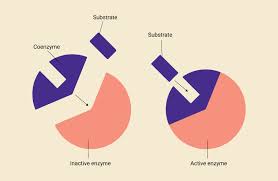Enzymes and Coenzymes:

The recent issue of Nature highlighted biofortified rice varieties, a major breakthrough from CAS, Beijing, under the title ‘Gene-edited plants make the jump from farm to factory’.
- Enzymes are proteins that catalyze biochemical reactions, enhancing the efficiency of cellular metabolism.
- Many enzymes require helper molecules for proper function. These are called cofactors, and when they are organic molecules, they are termed coenzymes.
- Coenzymes bind to enzymes and support their activity, playing a crucial role in various metabolic pathways.
- Coenzyme Q (CoQ), also known as ubiquinone, is an organic antioxidant molecule with multiple isoprene units.
- It exists in ten different forms, from CoQ1 to CoQ10, and is lipid-soluble but water-insoluble.
- Coenzyme Q is vital for mitochondrial function and is found in every cell membrane, where it aids cellular energy production.
- CoQ9, containing nine isoprene units, is predominantly produced in cereal crops such as wheat, rice, oats, barley, corn, rye, and millet.
- It is also found in bamboo, barley, and flowering plants like cinnamon, avocado, and pepper.
- CoQ10 is an essential part of the mitochondrial electron transport chain, generating the majority of the body’s cellular energy.
- Organs like the heart, which have high energy demands, contain high levels of CoQ10.
- Although CoQ9 is available in staple foods, humans require additional CoQ10 due to genetic factors, aging, and neurological disorders.




